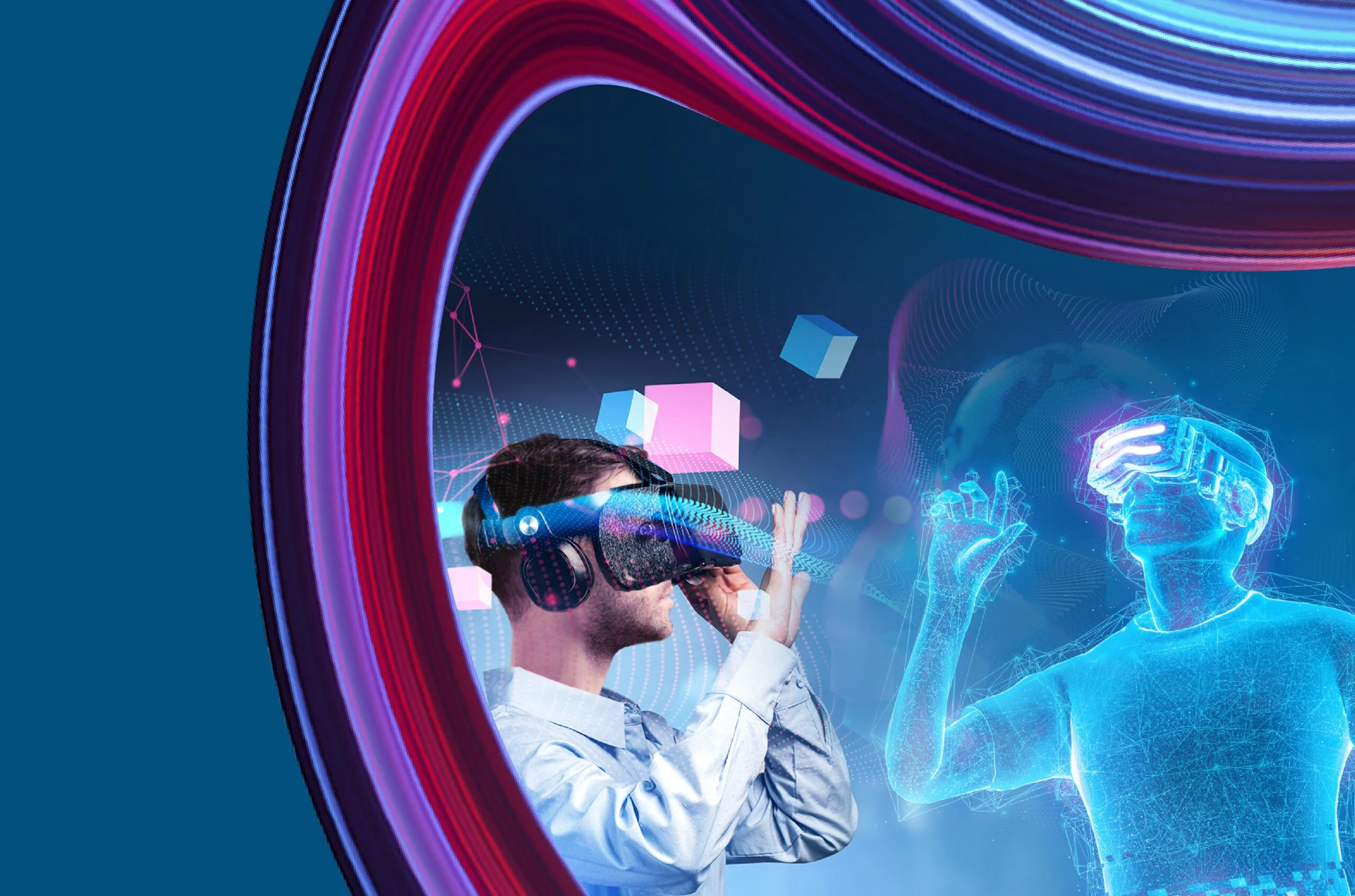In recent years, the world of technology has witnessed a significant shift towards immersion and interactivity. Developers are excited to learn VR and AR, two groundbreaking technologies that have captured the imagination of people across the globe. From entertainment and gaming to education and healthcare, AR/VR is revolutionizing various industries and unlocking limitless possibilities in immersive experiences. But what are these immersive technologies? Why is AR/VR crucial to building a better future? The following paragraph lets us grasp a concise overview of the concept.
Immersive technology revolutionizes user experiences by seamlessly blending the physical world with digital or simulated realities. Among the primary types of immersive technologies are Augmented Reality (AR) and Virtual Reality (VR), both sharing several standard features. Nevertheless, their approach differs: AR enriches the user’s real environment with computer-generated information, whereas VR immerses users entirely in computer-generated content, providing a profound sense of presence.
AR/VR technology is incorporated into immersive experiences by providing users with interactive and sensory-rich environments that blend the real world with virtual elements. Both AR and VR achieve immersion through different approaches:
Augmented Reality (AR):
AR enhances the real-world environment by overlaying virtual content onto it. Users experience an amalgamation of both physical and digital elements, allowing them to interact with virtual objects and information within their surroundings.
Virtual Reality (VR):
VR creates an entirely artificial environment that users can enter through specialized headsets. By immersing users in a simulated world, VR offers a sense of presence and realism, enabling them to interact with virtual objects as if they were real.
In both cases, the goal of AR/VR is to transport users to new and engaging experiences, blurring the lines between the physical and digital realms. These technologies have significantly impacted various industries, offering new ways of learning, training, gaming, and collaboration. As technology continues to advance, the potential for AR/VR to unlock even more immersive possibilities remains limitless.
This article aims to explore those possibilities with real-life applications.
Immersive Learning
The first and foremost application of these technologies is immersive learning. Immersive learning represents a groundbreaking paradigm in education, capable of reshaping the learning and teaching landscape. This cutting-edge method harnesses the power of technologies like augmented reality (AR) and virtual reality (VR) to construct simulated environments mirroring real-world scenarios. It offers learners an engaging and interactive hands-on experience.
Educators aim to foster a more captivating and experiential learning journey by submerging learners in virtual environments resembling the real world. This approach facilitates a deeper understanding of concepts and enhances student information retention. Particularly effective in domains such as medicine, engineering, and architecture, where hands-on experience is paramount, this immersive learning method holds the potential to revolutionize education.
Comparing AR and VR in Immersive Learning: Making Informed Choices
Immersive learning experiences have been enriched by both Augmented Reality (AR) and Virtual Reality (VR), but these technologies possess distinct characteristics that render them more suitable for specific learning activities.
AR and VR diverge primarily in their level of immersion. AR overlays digital content in the real world, while VR produces artificial environments. AR excels in enhancing traditional classroom materials and providing supplementary information. On the other hand, VR proves more adept at simulating intricate, dynamic environments, allowing learners to interact with and manipulate their surroundings. Hence it becomes essential to choose the right technology for your learning goals.
Selecting between AR and VR for immersive learning depends on your learning objectives and the type of environment you wish to create. AR is ideal for augmenting traditional classroom materials and enriching learning experiences with supplementary information. Conversely, VR is better suited for crafting fully immersive and interactive simulations, empowering learners to engage and experiment in ways unfeasible in the physical world.
Ultimately, both AR and VR have the potential to revolutionize the learning landscape, generating more engaging and experiential environments. By understanding these technologies’ unique advantages and limitations, educators can make informed decisions about incorporating them effectively into their teaching practices.
Training and Collaboration
In the business world, AR/VR is revolutionizing training and collaboration. These technologies have become indispensable tools in various industries, from training employees in hazardous environments to enabling remote teams to work together seamlessly. Companies can now conduct virtual conferences, design and visualize products in 3D, and even offer virtual tours of real estate properties, bringing a new dimension to marketing and customer experiences.
Healthcare
Healthcare is another field that has greatly benefited from AR/VR applications. Surgeons can practice complex procedures in virtual environments before performing them on actual patients, reducing the risk and improving the outcomes of surgeries. Additionally, AR has assisted people with visual impairments, helping them navigate the world more independently.
VR Gaming
Gaming, however, remains one of the most prominent areas where AR/VR has made a tremendous impact. VR gaming offers an unparalleled level of immersion, transporting players to fantastical worlds and providing experiences that were previously unimaginable. With the introduction of interactive controllers and haptic feedback, players can physically engage with virtual objects and environments, further blurring the lines between reality and the virtual realm.
Conclusion
Given the growing significance of AR/VR, learning to develop and create content for these platforms opens up many opportunities. For aspiring developers and content creators, mastering AR/VR development tools and techniques can lead to exciting careers in industries at the forefront of technology. As demand increases, professionals skilled in AR/VR will be in high order and play a crucial role in shaping the future of these immersive technologies.
Fortunately, learning AR/VR has never been more accessible. Numerous online AR/VR courses, tutorials, and communities are dedicated to helping individuals get started in this field.
However, choosing the right resource is extremely important. The MAGES Institute of Excellence is among the best organizations offering a Diploma in the XR Immersive Program. In this program, you will acquire the expertise to craft captivating applications for Augmented and Virtual Reality Experiences. With the guidance of experienced mentors, you’ll develop practical skills that enable you to create interactive AR/VR applications.
Whether you are a developer, artist, educator, or entrepreneur, MAGES has all the resources to suit your specific interests. Visit their website https://mages.edu.sg/ and explore the uncharted territories of immersive technology.



